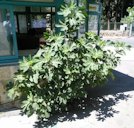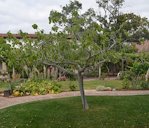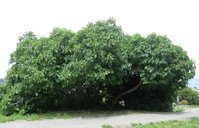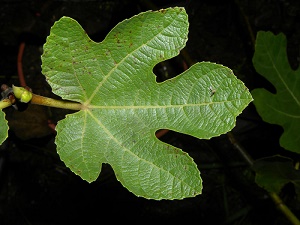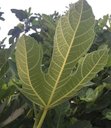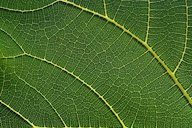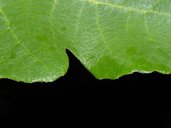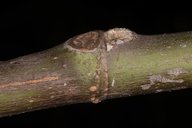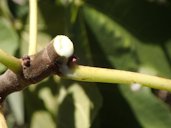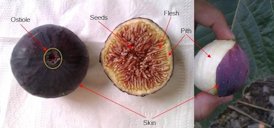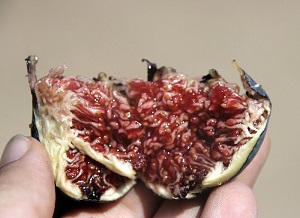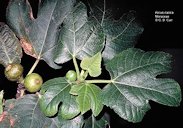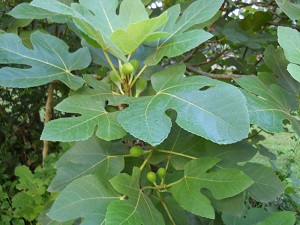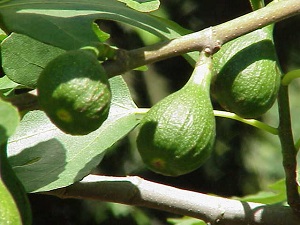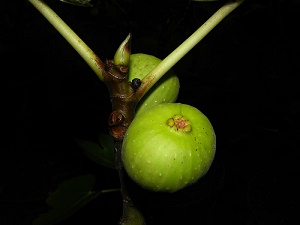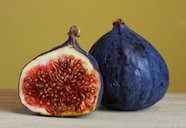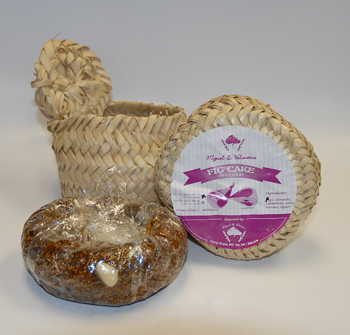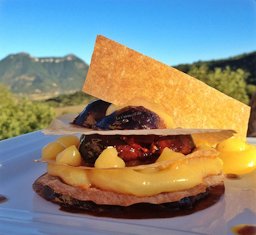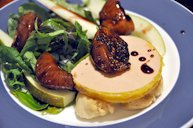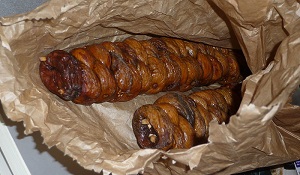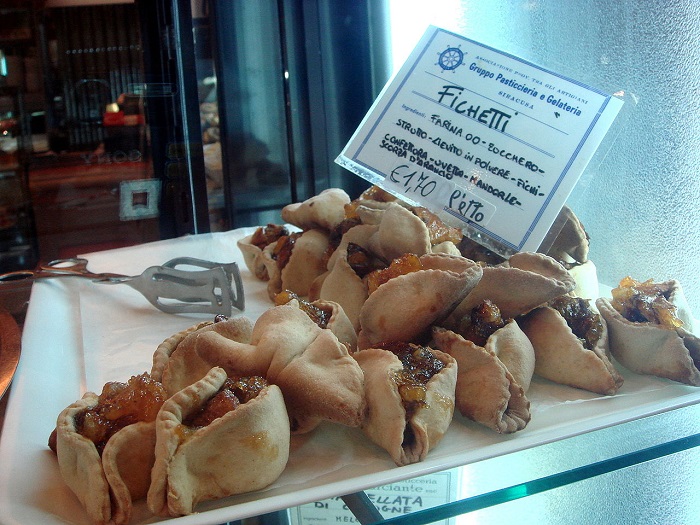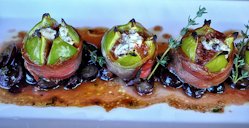| Fig - Ficus carica | ||||||||||||||||||||||||||||||||||||||||||||||||||||||||
|---|---|---|---|---|---|---|---|---|---|---|---|---|---|---|---|---|---|---|---|---|---|---|---|---|---|---|---|---|---|---|---|---|---|---|---|---|---|---|---|---|---|---|---|---|---|---|---|---|---|---|---|---|---|---|---|---|
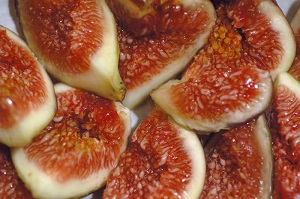 Fig. 1  Fresh figs cut open showing the flesh and seeds inside 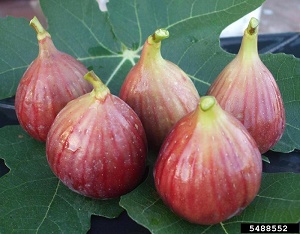 Fig. 2  Edible fig Ficus carica 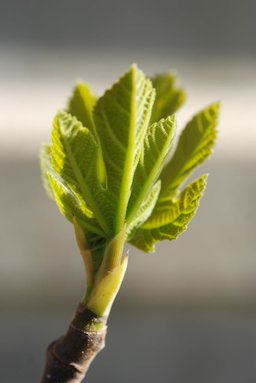 Fig. 6  F. carica, province of Bergamo, Italy 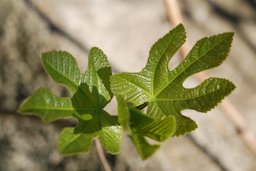 Fig. 7  F. carica, province of Bergamo, Italy 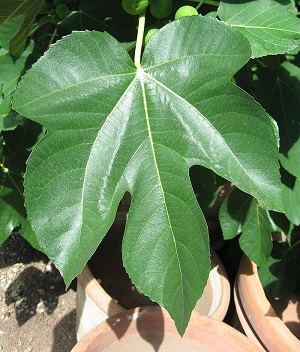 Fig. 8  F. carica leaf in Giardino dei Semplici di Firenze 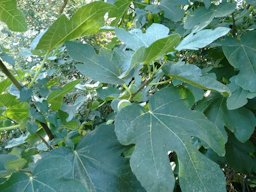 Fig. 9  F. carica, Comunidad de Madrid, ES-MD-MD, ES 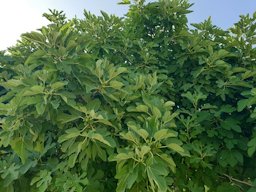 Fig. 10  Kavarna, Dobrich, Bulgaria 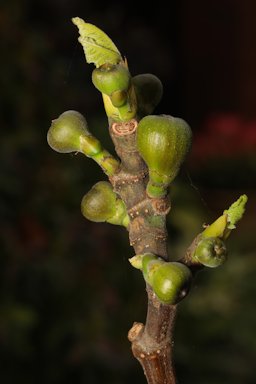 Fig. 17  Woolton, Liverpool, Merseyside, UK 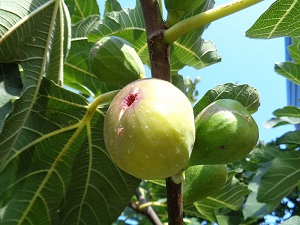 Fig. 18  Figs in various stages of ripening on a branch, grown in Croatia 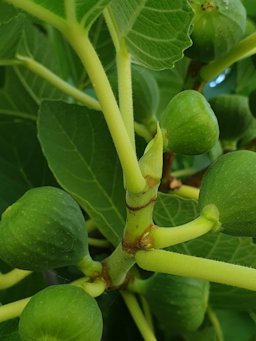 Fig. 19  Kavarna, Dobrich, Bulgaria, fruit habit 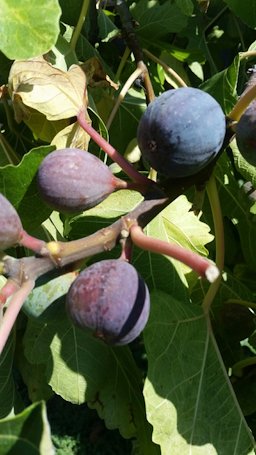 Fig. 20  McLane, Fresno, CA, USA 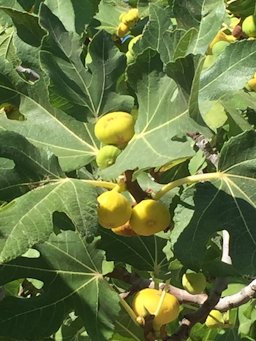 Fig. 21  Nisos Karpathos, Lakki, Dodecane, Greece 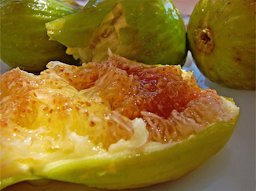 Fig. 22 Fig (fichi bianchi) of Cilento, province of Salerno, Italy 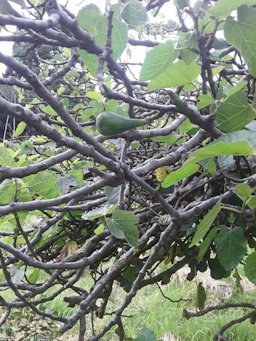 Fig. 30  F. carica, La Concepcion, Cajicá, Cundinamarca, Colombia 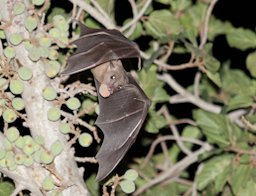 Fig. 31  Egyptian fruit bat - Rousettus aegyptiacus - in flight with a fig fruit 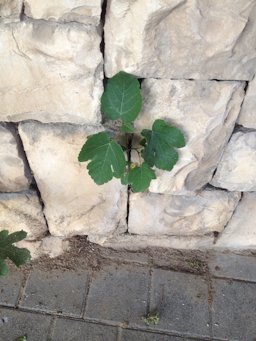 Fig. 32  Fig tree growing in a crack of a wall from discarded seed probably by a bird, Shmuel Beit Street, Jerusalem 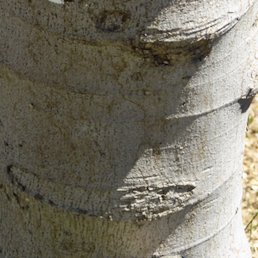 Fig. 33 F. carica, Splitsko, Croatia 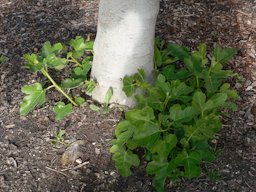 Fig. 34  Basal shoots or suckers coming from the base of a California 'Blackjack' fig tree 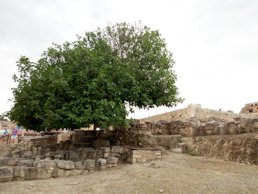 Fig. 35  F. carica, Crete, Greece 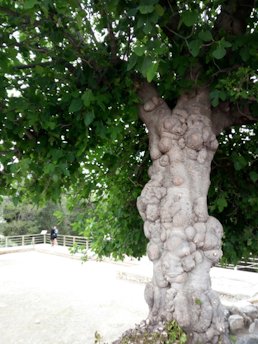 Fig. 36  F. carica, Crete, Greece 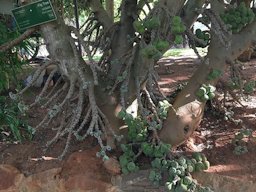 Fig. 37  Figs in a fig tree India Fig. 38  This fig tree grows at the entrance to a large cave in Jerusalem Forest 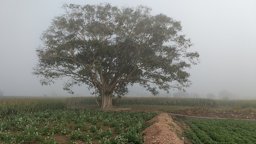 Fig. 39  Sacred fig tree on a foggy morning in Coimbatore, Tamil Nadu, India 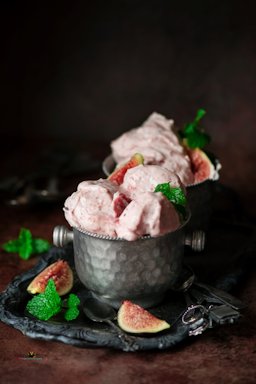 Fig. 40  Fig ice cream (Anjeer ice cream) 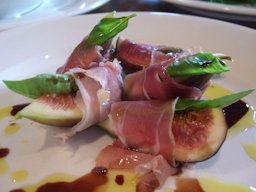 Fig. 41  Figues au jambon de Parme, France Fig. 51  Dried figs for sale, Rajkot, Gujarat, India 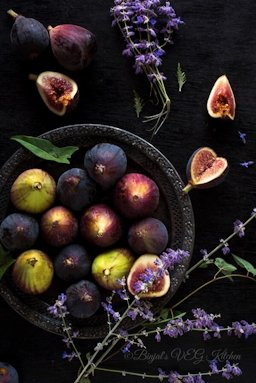 Fig. 52  Fig. 53  Banner of the Brotherhood of Black Long Fig of Caromb (Vaucluse, France) |
Scientific
name Ficus carica L. Common names English: fig, common fig, or edible fig; French: figue; German: Essfeige, Feige, Feigenbaum, Echte Feige, Gewöhnlicher Feigenbaum; Italian: figo; Portuguese: bebereira, figueira, figueira-comum; Spanish: higo or brevo; Haitians give it the name, figue France, to distinguish it from the small, dried bananas called "figs" 3,9 Synonyms F. carica var. afghanica Popov; F. carica var. caprificus Risso; F. carica var. domestica Czern. & Rav.; F. carica var. globosa Hausskn.; F. carica var. johannis (Boiss.) Hausskn.; F. carica var. longipes Bornm. ex Parsa; F. carica var. riparium Hausskn.; F. carica var. rupestris Hausskn.; F. carica subsp. rupestris (Hausskn.) Browicz 6 Relatives Cluster fig, F. racemosa; sycomore fig (F. sycomorus) Family Moraceae (mulberry family) Origin Asia Minor and the Mediterranean region 1 USDA hardiness zones 8-10 Uses Fruit; landscape value Height In Florida, because of cold injury, seldom reach 25 ft (7.6 m) Spread Low, spreading tree 12 ft x 12 ft (3.7 x 3.7 m) Plant habit Bushy habit; many suckers; rounded umbrella or vase shape; multiple-branched shrubs 1,8 Growth rate Rapid Longevity Remain productive up to 12-15 years; though the trees may live to a very advanced age; 50-150 years (Fig. 35,36,38) 3,8 Trunk/bark/branches Smooth light gray bark; muscular and twisting branches 1,11 Pruning requirement Fig trees do not require pruning to be productive 1 Leaves Large; thick; single and alternate; deeply lobed; deciduous; upper surface rough hairy; underside soft hairy 1,11 Flowers Tiny flowers are out of sight, clustered inside the green “fruits”, technically a synconium 11 Fruit Pear-shaped; hollow; fleshy; 1-3 in. (2.5-7.6 cm); green, yellow, pink, violet, brown and black Season Summer to early fall depending on cultivar USDA Nutrient Content: dry, raw pdf Light requirement Full sun all day Soil tolerances Tolerant of most soils pH preference 5.5-8.0 Drought tolerance Drought-stressed trees are more susceptible to nematodes and will not fruit well 1 Soil salt tolerance Poor Cold tolerance Hardy to 15-20 °F (-9.4-6.7 °C) 1 Plant spacing 10-16 ft (3-5 m) between plants; 13-20 ft (4-6 m) between rows for orchards and dooryard trees 1 Roots Produce roots that can be very deep in well drained soils; greedy, traveling far beyond the tree canopy 1,11 Invasive potential * Predicted to be invasive and not recommended by IFAS, will be reassessed every 10 years Pest resistance Problems with birds, fig rust and nematodes in sandy soils Known hazard When branches are cut or damaged, they produce copious quantities of a milky latex (Fig. 16) that can be a skin irritant 1 Reading Material The Fig, University of Florida pdf Fig, Fruits of Warm Climates Fig, Progress in New Crops Fig, California Rare Fruit Growers Figs, Aggie Horticulture®, Texas A&M AgriLife Extension pdf Origin The fig originated in the Old World Tropics, Asia Minor and the Mediterranean region. In the Mediterranean, the fig has been cultivated since as early as 5,000 BC. The fig tree was first introduced to the Americas in 1575 by Spanish explorers in Florida. On the West Coast, in the area that eventually became the State of California, Spanish Franciscan missionaries introduced the cultivar 'Mission' to the area that, in 1769, became the mission San Diego. Additional fig cultivars were also imported to the California area from Mediterranean countries, including Turkey. 1 Adaptation The fig is adapted to dry, Mediterranean-type climates, such as California. The humid growing season in Florida is associated with enhanced insect and disease pressure, and rain can cause fruit to split. Fig cultivars do not require more than 100 hours of temperature of 45°F or less during the dormant season to promote normal vegetative and reproductive bud development. As a result, figs receive sufficient winter chilling in all areas of Florida except the south. Fully dormant trees are hardy to about 15°F–20°F. Exposure of trees to low-temperature preconditions can increase cold hardiness. 1 Description The fig is one of the most popular and desirable fruits of warm-temperate areas. It succeeds in every region of Florida, from Pensacola to Homestead. Once it is established, the fig requires little mantenance, although it may be troubled by nematodes when planted in sandy soil. The tree is handsome and well behaved. Some cultivars produce 2 crops a year. 4
Fig. 3. F. carica, Mea She'arim, Jerusalem, Israel Fig. 5. Large fig tree on Palmaria island (Liguria, Italy) Leaves/Branch Fig leaves are large (up to 1 foot long), thick, colored a bright dark green, single and alternate. These leaves are deeply lobed with usually three to five sinuses. Leaves contain trichomes (pubescence), which is particularly rough on the adaxial (upper) leaf surface. Leaf pubescence can also be an irritant to the skin. 1
Fig. 11. F. carica L. (cultivado) Fig. 12. F. carica, Sassi di Matera, Italy Fig. 13. Fig leaf venation Fig. 15. F. carica, Novara, Italy Fig. 16. F. carica, sap, Orange County, CA, US Flowers Flowers are minute, unisexual, bearing either stamens or pistils, depending upon the type of fig. Flowers are borne in leaf axils.. 1 In the case of the common fig the flowers are all female and need no pollination. There are 3 other types, the caprifig which has male and female flowers requiring visits by a tiny wasp, Blastophaga grossorum; the Smyrna fig, needing cross-pollination by caprifigs in order to develop normally; and the San Pedro fig which is intermediate, its first crop independent like the common fig, its second crop dependent on pollination. 11 Pollination Pollinating insects gain access to the flowers through an opening at the apex of the synconium. In the case of the common fig the flowers are all female and need no pollination. 11 Fruit What is commonly accepted as a "fruit" is technically a synconium, that is, a fleshy, hollow receptacle with a small opening at the apex partly closed by small scales. It may be obovoid, turbinate, or pear-shaped, 1 to 4 in (2.5-10 cm) long, and varies in color from yellowish-green to coppery, bronze, or dark-purple. 3 The unfertilized ovaries provide the resin-like flavor associated with fruit of fig. Fruit can contain a closed or an open ostiole or eye located at the fruit apex. 1 Figs are non-climacteric.
Fig. 23. Fig fruit anatomy Fig. 25,26,27. Leaves and immature fruit Fig. 28. Unripe fruit Fig. 29. Cross section Types of Figs There are four types of figs—Caprifigs, Smyrna, San Pedro, and common types, which are recommended for Florida. Caprifigs produce staminate (male) flowers and are useful only as a source of pollen. Smyrna bears only pistillate (female) flowers and requires a caprifig for pollination. San Pedro has pistillate flowers and bears two crops, one on leafless wood requiring no pollination and the other borne on new wood that requires pollination. 1 Selection of Cultivars Characteristics that should be considered in the selection of fig cultivars include the following: • Cold hardiness; • The ability to set fruit without pollination (parthenocarpy); • The fruit having a closed eye, or ostiole; • A long peduncle that allows the fruit to droop and shed moisture; and • A green skin on the fruit to minimize bird herbivory. 1 Varieties Fig cultivars recommended for Florida belong to the common types of fig and are parthenocarpic; fruit develop without pollination. Smryna and San Pedro types will not bear fruit in Florida because of the absence of Caprifigs and a wasp pollenizer (Blastophaga psenes). Because the common types of fig do not require a wasp pollinizer, the best cultivars have a closed ostiole to minimize rotting by preventing the occurrence of insects or rain water inside the fruit. Brown Turkey and Celeste are common cultivars that are reported to be more cold hardy than many other fig cultivars. 1 Varieties Page Choosing the Right Fig Variety, Just Fruits and Exotics nursery Harvesting Figs ripen on the tree and don't ship well, so the best way to truly enjoy a fresh fig is from your local market, or better yet, your own fig tree. Luckily, Florida offers the right growing conditions and figs are fairly easy to grow in north and central Florida. 5 The fruit is deemed mature when it droops slightly and separates easily from the branch. 4 The common fig bears a first crop, called the breba crop, in the spring on last season’s growth. The second crop is borne in the fall on the new growth and is known as the main crop. 11 Often this crop can be induced to ripen sooner by oiling the fruit. Oiling blocks the eye of the fig, inducing ethylene to form, that is what hastens the ripening. You’ve got to get the fig close to ripening before the oil will work. Usually the best ones to do, are ones that are good size and you can see some coloring around the eye. You can use olive oil or any other refined edible oil. Just use a dropper to place the oil in the eye of the fig. 12
Figs in Japan are usually peeled and eaten raw, but they are also popular in their dried form or are processed into jams. Figs are in season during late summer and early fall. Figs made their way to Japan from the Mediterranean in the early 1600s via China, when the fruit was also known as "foreigner's kaki". The vast majority of figs in Japan are of the Masui Dauphine variety, which is a relatively large type of fig and is named after Mr. Masui who cultivated the fruit in the early 1900s. Propagation Fig trees are usually propagated by using dormant cuttings. Select dormant wood about 6 inches long and less than 1 inch in diameter. The basal end of the cutting should be 2-year-old wood. 1 Grafting video series, Figholics Culture Edible fig is a deciduous plant that requires about 100 hours of chilling temperatures to grow and set fruit. 5 Fresh Figs, Groundbreaking Roots Planting In Florida, bare-rooted fig plants can be planted during the dormant season, from December to late February. Container-grown plants can be planted any time of the year provided they receive irrigation. 1 The grower of container figs will be rewarded with a good crop, since root restriction in figs promotes heavy fruit. 12 Espalier trees against a south-facing, light-colored wall to take advantage of the reflected heat. In coastal climates, grow in the warmest location, against a sunny wall or in a heat trap. For container grown plants, replace most of the soil in the tub every three years and keep the sides of the tub shaded to prevent overheating in sunlight. 11 Pruning Fig trees are productive with or without heavy pruning. It is essential only during the initial years. Trees should be trained according to use of fruit, such as a low crown for fresh-market figs. Since the crop is borne on terminals of previous year’s wood, once the tree form is established, avoid heavy winter pruning, which causes loss of the following year’s crop. It is better to prune immediately after the main crop is harvested, or with late-ripening cultivars, summer prune half the branches and prune the remainder the following summer. If radical pruning is done, whitewash the entire tree. 11 Pruning may be required to maintain a balance between new and old wood, as well as to remove suckers and to keep the tree's canopy to a reasonable size for easy harvesting. 10 Tranining The smooth, limber trunk of the young fig is perfect for training into espalier or twisting into odd specimen trees. Lay the trunk flat against the ground and the new vertical shoots make an instant hedge. 12 Fig Training in Other Countries Fertilizing The general consensus is that fig trees typically require light fertilization. Excess fertilization can promote excessive vegetative growth and low yield. If the total amount of vegetative growth is less than one foot in length, then it is appropriate to apply fertilizer. 1 For young trees, ½ pound of 10-10-10 with micronutrients can be applied three to five times during the growing season, starting in late winter (February to March) and ending by the beginning of August. For large trees, apply 2 to 4 pounds of 10-10-10 with micronutrients three to five times during the growing season (February to August). 1
Irrigation Irrigation is required for fig trees during the establishment year. During that period, a fig tree should receive 10 gallons per application at least three times a week. Irrigation after the establishment year is optional except during a prolonged drought. 1 Pests Fig trees are prone to attack by nematodes (especially Meloidogyne spp.) and, in the tropics, have been traditionally planted close to a wall or building so that the roots can go underneath and escape damage. 3 Although many diseases attack figs, most figs are grown in homeowner settings and do not receive pesticide sprays. The most common insect pests are mealy bug, three-lined fig borer and ants. The application of insecticide is seldom warranted. Please contact your local UF/IFAS Extension agent for spray recommendations. 1 Mushroom compost and rotted manure are excellent mulches for fighting off nematodes in figs. 12 Disease Page Food Uses Some people peel the skin back from the stem end to expose the flesh for eating out of-hand. The more fastidious eater holds the fruit by the stem end, cuts the fruit into quarters from the apex, spreads the sections apart and lifts the flesh from the skin with a knife blade, discarding the stem and skin. 3 In warm, humid climates, figs are generally eaten fresh and raw without peeling, and they are often served with cream and sugar. Peeled or unpeeled, the fruits may be merely stewed or cooked in various ways, as in pies, puddings, cakes, bread or other bakery products, or added to ice cream mix. Home owners preserve the whole fruits in sugar sirup or prepare them as jam, marmalade, or paste. 3
Fig. 42. Fig cake Fig. 43. Tarte fine figues de Provence et crème de citrons, Solliès, France Fig. 44. Foie gras med flute, salat, pære og rødvinssyltede figner (with lettuce, pear and red wine pickled figs) Fig. 45. Schiocca di fichi secchi in Calabria (dried figs from Calabria) Fig. 46. Pink peppercorn with mint stewed fig on vegan white chocolate mousse and vegan cookie Fig. 47. "Fichetti" (fig pastry), Syracuse, Sicily Fig. 48. Fig and goat cheese clafoutis - one of my favorite desserts for fig season Fig. 49. Proscuitto, figs and gorgonzola Fig. 50. Italian dried figs in balsamic vinegar Medicinal Properties ** The latex is widely applied on warts, skin ulcers and sores, and taken as a purgative and vermifuge, but with considerable risk. In Latin America, figs are much employed as folk remedies. A decoction of the fruits is gargled to relieve sore throat; figs boiled in milk are repeatedly packed against swollen gums; the fruits are much used as poultices on tumors and other abnormal growths. The leaf decoction is taken as a remedy for diabetes and calcifications in the kidneys and liver. Fresh and dried figs have long been appreciated for their laxative action. 3 Other Uses Dried cull figs have been roasted and ground as a coffee substitute. In Mediterranean countries, low-grade figs are converted into alcohol. An alcoholic extract of dried figs has been used as a flavoring for liqueurs and tobacco. 3 In southern France, there is some use of fig leaves as a source of perfume material called "fig-leaf absolute" a dark-green to brownish-green, semi-solid mass or thick liquid of herbaceous-woody-mossy odor, employed in creating woodland scents. 3 The latex contains caoutchouc (2.4%), resin, albumin, cerin, sugar and malic acid, rennin, proteolytic enzymes, diastase, esterase, lipase, catalase, and peroxidase. It is collected at its peak of activity in early morning, dried and powdered for use in coagulating milk to make cheese and junket. From it can be isolated the protein-digesting enzyme ficin which is used for tenderizing meat, rendering fat, and clarifying beverages. 3 General Fig. 54. Ficus carica distribution range Further Reading Fig, Twelve Fruits Project, University of Hawai'i at Mānoa Fig, Ficus carica, Fruitipedia Fig Botanical Art List of Growers and Vendors |
|||||||||||||||||||||||||||||||||||||||||||||||||||||||
| Bibliography 1 Sarkhosh, Ali, and Peter C. Andersen. "The Fig." Horticultural Sciences Department, University of Florida, IFAS Extension, HS27, Original Pub. Mar. 1994, Revised Nov. 2009, June 2016, and Oct. 2019, EDIS, edis.ifas.ufl.edu/mg214. Accessed 4 Mar. 2017, 15 June 2020. 2 "Common Fig." Wikipedia, wikipedia.org. Accessed 4 Dec. 2014. 3 Fruits of Warm Climates. Julia F. Morton, Miami, 1987. 4 Boning, Charles R. Florida's Best Fruiting Plants- Native and Exotic Trees, Shrubs, and Vines. Sarasota, Pineapple Press, 2006. 5 "Figs." Gardening Solutions, UF/IFAS, gardeningsolutions.ifas.ufl.edu. Accessed 4 Mar. 2017. 6 " Ficus carica L. synonyms." The Plant List (2010). Version 1. theplantlist.org. Accessed 5 Mar. 2017. 7 Parmar, Chiranjit. "Fig, Ficus carica." Encyclopedia of the Edible Fruits of the World, Original May 2008, Revised 2013, Frutipedia, fruitipedia.com. Accessed 8 Mar. 2017. 8 SelecTree. "Ficus carica Tree Record." SelecTree, National Arboretum - Washington, DC and San Luis Obispo, CA, 1995-2017, selectree.calpoly.edu. Accessed 9 Mar. 2017. 9 "Ficus carica L." GBIF Secretariat (2019), GBIF Backbone Taxonomy, GBIF.org, doi.org/10.15468/39omei. Accessed 18 June 2020. 10 Tous, Joan, and Louise Ferguson. "Mediterranean Fruits." Progress in New Crops, Edited by J. Janick, 1996, NewCROP™, hort.purdue.edu/newcrop/proceedings1996/V3-416.html. Accessed 8 Oct. 2014, 28 Apr. 2019. 11 "Ficus carica L." California Rare Fruit Growers, crfg.org. 1996. Accessed 8 Mar. 2017. 12 Cowley Gilbert, Brandy. "Choosing the Right Fig Variety." Just Fruits and Exotics, justfruitsandexotics.com. Accessed 12 Mar. 2017. Videos v1 "Japan Fig Farm and Harvest ." Noal Farm, 24 Dec. 2019, (CC BY 3.0), youtu.be/gbQt3uGEONw. Accessed 5 July 2021. v2 "Fig orchard irrigation and nutrition discussion." Figaholics, 17 Aug. 2019, www.youtube.com/watch?v=tyxgVCAoYDM. Accessed 6 July 2021. Photographs Fig. 1 Hunt, Eric. "Fresh figs cut open showing the flesh and seeds inside." Wikimedia Commons, 2005, (CC BY-SA 2.5), wikipedia.org. Accessed 6 Mar. 2017. Fig. 2 Hamann, Jonas Janner. "Edible fig Ficus carica L." Bugwood.org, 2013, (CC BY 3.0 US), bugwood.org. Updated 2016. Accessed 5 Mar. 2017. Fig. 3 bobasil. "Ficus carica. Mea She'arim, Jerusalem, Israel." iNaturalist Research Grade Observation, no. 50035426, 15 June 2020, (CC BY-NC 4.0), Image cropped, www.inaturalist.org/photos/50035426. Accessed 18 June 2020. Fig. 4 Ritter, M., et al. "Ficus carica Tree Record." Selectree, National Arboretum - Washington, DC and San Luis Obispo, CA, 1995-2017, selectree.calpoly.edu. Accessed 9 Mar. 2017. Fig. 5 Tangopaso. "Large fig tree on Palmaria island (Liguria, Italy)." Wikimedia Commons, 11 June 2016, Public Domain, Image cropped, commons.wikimedia.org/wiki/File:Large_fig_tree_on_Palmaria.jpg. Accessed 22 June 2020. Fig. 6,7 Perico, Giovanni. "Ficus carica. Province of Bergamo, Italy." iNaturalist Research Grade Observation, no. 66342790, 10 Apr. 2020, (CC BY-NC 4.0), www.inaturalist.org/photos/66342790. Accessed 18 June 2020. Fig. 8 Liné1. "Ficus carica leaf in Giardino dei Semplici di Firenze." Wikimedia Commons, 2007, (CC BY-SA 3.0), GFDL, commons.wikimedia.org. Accessed 6 Mar. 2017. Fig. 9 Medina, Rafael. "Ficus carica. Comunidad de Madrid, ES-MD-MD, ES." iNaturalist Research Grade Observation, no. 1890421, 25 Aug. 2015, (CC BY-NC 4.0), www.inaturalist.org/photos/1890421. Accessed 18 June 2020. Fig. 10,19 zmei. "Ficus carica. Kavarna, Dobrich, Bulgaria." iNaturalist Research Grade Observation, no. 29107627, 19 July 2019, (CC BY-NC 4.0), www.inaturalist.org/observations/29107627. Accessed 16 June 2020. Fig. 11,14 Aguilar, Reinaldo. "Ficus carica L. (cultivado)." Vascular Plants of the Osa Peninsula, Costa Rica, 2012, Flickr, flickr.com. (CC BY-NC-SA 2.0). Accessed 7 Mar. 2017. Fig. 12 Belmonte, Joelle. "Ficus carica. Sassi di Matera, Italy." iNaturalist Research Grade Observation, no. 4243992, 19 July 2019, (CC BY-NC 4.0), Image cropped, www.inaturalist.org/observations/4243992. Accessed 16 June 2020. Fig. 13 ulleo. "Fig leaf venation." Pixabay, pixabay.com/photos/fig-leaf-leaf-green-close-up-macro-3617339/. Accessed 21 June 2020. Fig. 15 Drepanostoma. "Ficus carica. Novara, Italy." iNaturalist Research Grade Observation, no. 2721212, 27 Feb. 2016, (CC BY-NC 4.0), Image cropped, www.inaturalist.org/observations/2721212. Accessed 16 June 2020. Fig. 16 Vanderhoff, Ron. "Ficus carica. Orange County, CA, US." iNaturalist Research Grade Observation, no. 16053072, 30 Aug. 2018, (CC BY-NC 4.0), www.inaturalist.org/photos/16053072. Accessed 18 June 2020. Fig. 17 McWilliam, Stephen James. "Ficus carica. Woolton, Liverpool, Merseyside, UK." iNaturalist Research Grade Observation, no. 66636861, 12 Apr. 2020, (CC BY-NC 4.0), www.inaturalist.org/photos/66636861. Accessed 18 June 2020. Fig. 18 Silverije. "Figs in various stages of ripening on a branch, grown in Croatia." Wikimedia Commons, 2016, (CC BY-SA 4.0), wikipedia.org. Accessed 6 Mar. 2017. Fig. 20 edilu07. "Ficus carica. McLane, Fresno, CA, USA." iNaturalist Research Grade Observation, no. 29721973, 28 July 2019, (CC BY-SA 4.0), www.inaturalist.org/photos/29721973. Accessed 16 June 2020. Fig. 21 clasac. "Ficus carica. Nisos Karpathos, Lakki, Dodecane, Greece." iNaturalist Research Grade Observation, no. 48465414, 4 June 2020, (CC BY-SA 4.0), www.inaturalist.org/photos/48465414. Accessed 16 June 2020. Fig. 22 DS, Ray. "Fig of Cilento, province of Salerno - Italy." Wikimedia Commons, via Flickr, 19 Aug. 2007, (CC BY 2.0), commons.wikimedia.org/wiki/File:Fig_of_Cilento_(Italy).jpg. Accessed 20 June 2020. Fig. 23 Sarkhosh, Ali. "Fig fruit anatomy." Horticultural Sciences Dept., University of Florida, EDIS, edis.ifas.ufl.edu/mg214. Accessed 16 June 2020. Fig. 24 Yosarian. "Open Fig fruit held in hand." Wikimedia Commons, 2008, (CC BY-SA 3.0), commons.wikimedia.org. Accessed 6 Mar. 2017. Fig. 25 Carr, Gerald D. "Ficus carica. Moracaea." University of Hawai'i, Botany Department, Mānoa Campus Plants, botany.hawaii.edu. Accessed 6 Mar. 2017. Fig. 26 Woodlot. 'Leaves and immature fruit." Wikimedia Commons, via EnWikipedia, 2010, (CC BY 3.0), wikipedia.org. Accessed 6 Mar. 2017. Fig. 27 Stueber, Kurt. "Ficus carica. Family Moraceae." Wikimedia Commons, 2007, (CC BY-SA 3.0), GFDL, wikipedia.org. Accessed 6 Mar. 2017. Fig. 29 Pixabay, pixabay.com/photos/figs-fruits-food-2619978/. Accessed 21 June 2020. Fig. 30 SOLANO, Jhon f. "Ficus carica. La Concepcion, Cajicá, Cundinamarca, Colombia." iNaturalist Research Grade Observation, no. 37003816, 27 Dec. 2010, (CC BY-SA 4.0), www.inaturalist.org/photos/37003816. Accessed 16 June 2020. Fig. 31 Пыхманн, Вых. "Egyptian fruit bat - Rousettus aegyptiacus - in flight with a fig fruit." Wikimedia Commons, 28 May 2013, (CC BY 3.0), commons.wikimedia.org/wiki/File:Rousettus_aegyptiacus.jpg. Accessed 20 June 2020. Fig. 32 bobasil. "Ficus carica. Shmuel Beit Street, Jerusalem, Israel." iNaturalist Research Grade Observation, no. 24295051, 1 May 2019, (CC BY-NC 4.0), www.inaturalist.org/photos/24295051. Accessed 20 June 2020. Fig. 33 Groves, Derek. "Ficus carica. Splitsko, Croatia." iNaturalist Research Grade Observation, no. 28517836, 9 July 2019, (CC0 1.0), www.inaturalist.org/photos/28517836. Accessed 19 June 2020. Fig. 34 NativeForeigner. "Basal shoots or suckers coming from the base of a California Blackjack fig tree." Wikimedia Commons, 24 May 2010, (CC BY-SA 3.0), GFDL, commons.wikimedia.org/wiki/File:Blackjack_basal_shoots.jpg. Accessed 22 June 2020. Fig. 35,36 Miroddi, Mattia Aaron. "Ficus carica. Crete, Greece." iNaturalist Research Grade Observation, no. 6142567, 8 May 2017, (CC BY-NC 4.0), www.inaturalist.org/photos/6142567. Accessed 19 June 2020. Fig. 37 Panigrahi, Subhashish. "Figs in a fig tree.India." Wikimedia Commons, 24 Mar. 2017, (CC BY-NC 4.0), commons.wikimedia.org/wiki/File:Figs_in_a_fig_tree.jpg. Accessed 20 June 2020. Fig. 38 Sanderovitz, Hedva. "The Fig tree grows at the entrance to a large cave in Jerusalem Forest." Wikimedia Commons, via PikiWiki Israel, 26 Jan 2013, (CC BY 2.5 US), commons.wikimedia.org/wiki/File:PikiWiki_Israel_29150_A_Fig_tree_in_Jerusalem_Forrest.JPG. Accessed 20 June 2020. Fig. 39 deadrat. "Sacred fig tree on a foggy morning in Coimbatore Tamil Nadu, India." Wikimedia Commons, 18 Dec. 2018, Public Domain, commons.wikimedia.org/wiki/File:Sacred_fig_tree_on_a_foggy_morning_in_Coimbatore_Tamil_Nadu.jpg. Accessed 22 June 2020. Fig. 40,52 "Fig Ice Cream (Anjeer Ice Cream)." Binjal's Veg Kitchen, 6 Aug. 2019, (CC BY-NC-ND 4.0), binjalsvegkitchen.com/fig-ice-cream-anjeer-ice-cream/. Accessed 5 July 2021. Fig. 41 avlxyz. "Figues au jambon de parme France." Wikimedia Commons, via Flickr, 10 Feb. 2007, (CC BY 2.0), commons.wikimedia.org/wiki/File:Figues_et_parme.jpg. Accessed 20 June 2020. Fig. 42 Love, Ken. "European Value Added Fig Products." HawaiiFruit.net, 2007, hawaiifruit.net. Accessed 4 Mar. 2017. Fig. 43 ADT 04. "Tarte fine figues de Provence et crème de citrons. Solliès, France." Wikimedia Commons, 14 Sept. 2012, (CC BY 2.0), commons.wikimedia.org/wiki/File:Tarte_aux_figues_de_Solliès_et_crème_de_citron.jpg. Accessed 20 June 2020. Fig. 44 cyclonebill. "Foie gras med flute, salat, pære og rødvinssyltede figner." Wikimedia Commons, via Flickr, 14 Nov. 2009, (CC BY-SA 2.0), commons.wikimedia.org/wiki/File:Flickr_-_cyclonebill_-_Foie_gras_med_flute,_salat,_pære_og_rødvinssyltede_figner.jpg. Accessed 20 June 2020. Fig. 45 Marcuscalabresus. "Schiocca": Calabrian dried figs." Wikipedia, 2011, (CC BY 3.0 US), wikipedia.org. Accessed 6 Mar. 2017. Fig. 46 Vegan Feast Catering. "Pink Peppercorn with Mint Stewed Fig on Vegan White Chocolate Mousse and Vegan Cookie." Wikimedia Commons, 16 June 2010, (CC BY 2.0), commons.wikimedia.org/wiki/File:Pink_Peppercorn_with_Mint_Stewed_Fig_on_Vegan_White_Chocolate_Mousse_and_Vegan_Cookie_(4711207340).jpg. Accessed 20 June 2020. Fig. 47 Tsi, Danielle. "Fig and goat Cheese clafoutis - one of my favorite desserts for fig season." Wikimedia Commons, via Flickr, 10 Sept. 2009, (CC BY-SA 2.0), commons.wikimedia.org/wiki/File:Fig_and_goat_Cheese_clafoutis,_September_2009.jpg. Accessed 20 June 2020. Fig. 48 Dall'Orto, Giovanni. "Fichetti" (fig pastry), shot in Syracuse, Sicily. 2008. commons.wikimedia.org. Accessed 6 Mar. 2017. Fig. 49 Waddington, Rod. "Proscuitto, Figs & Gorgonzola." Wikimedia Commons, via Flickr, 25 May 2012, (CC BY 2.0), commons.wikimedia.org/wiki/File:Proscuitto,_Figs_%26_Gorgonzola_(7264688328).jpg. Accessed 20 June 2020. Fig. 50 Love, Ken. "Italian dried figs in balsamic vinegar." HawaiiFruit.net, 2008, hawaiifruit.net. Accessed 4 Mar. 2017. Fig. 51 Jit.roy.chowdhury. "Dried figs for sale. Rajkot, Gujarat, India." Wikimedia Commons, via Wiki Loves Food, 28 Dec. 2014, (CC BY-NC 4.0), Image cropped, commons.wikimedia.org/wiki/File:Figs_for_sale!.JPG. Accessed 20 June 2020. Fig. 53 PAGNIER, Véronique. "Banner of the Brotherhood of Black Long Fig of Caromb (Vaucluse, France)." Wikimedia Commons, 4 Sept. 2010, Public Domain, commons.wikimedia.org/wiki/File:Bannière_Confrérie_de_la_Figue_(Caromb).JPG. Accessed 20 June 2020. Fig. 54 "Ficus carica L., Common fig distribution range." Institute for Systematic Botany, University of South Florida, Tampa, S. M. Landry and K. N. Campbell (application development), USF Water Institute, 2020, Atlas of Florida Plants, plantatlas.usf.edu. Accessed 5 Mar. 2017. * UF/IFAS Assessment of Non-native Plants in Florida's Natural Areas ** Information provided is not intended to be used as a guide for treatment of medical conditions. Published 8 Mar. 2017 LR. Last update 27 Aug. 2021 LR |
||||||||||||||||||||||||||||||||||||||||||||||||||||||||
